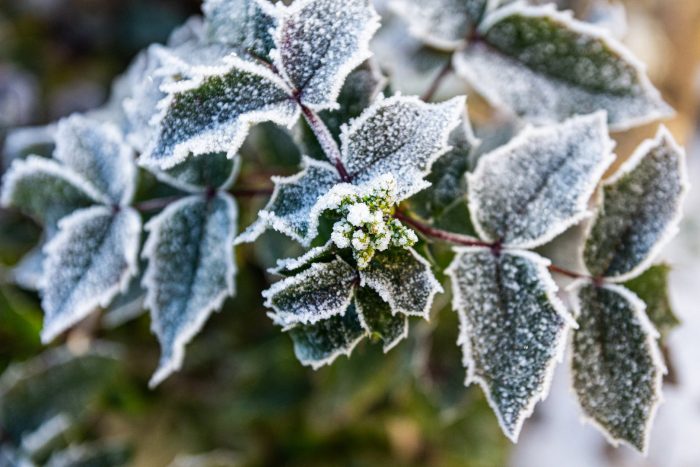Plant Tips for Cold Weather
By: Amanda Nicole
Fall is here and winter will soon be approaching. If you’re a plant lover then you maybe noticing some changes to your plants. Especially, the ones with leaves. The good news is, just like trees, plants are shedding to go dormant for the winter. If you have noticed more yellow leaves than usual it’s just your plants way of saving energy. I always suggest removing any dying leaves. When you remove the dead growth it gives the plant more energy to put towards new growth. We can learn a lot of things from plants!
Winter Plant Tips:
Tip 1: Cut back on watering
Your plants will not need as much water as the temperature starts to cool off in the evenings. I let my plants soil dry out completely before watering. When I do water, I give them a nice big drink. All plants are different. Typically, if your leaves are turning yellow that means you have overwatered your plant. If a plants starts turning brown and crispy that means it’s thirsty. Your plants will tell you what they need, you just have to know what to look for.
Tip 2: Prepare plants for the cold
You can add an extra layer to your plants for warmth. This can mean adding rocks, pine straw, wood chips, or just throwing a blanket over the top of them at night. Providing your plants with insulation is important if they are going to be outside. You don’t want any frost sitting on your plants. If you have a large collection using a green house is a huge lifesaver. You can also keep things simple by just moving them inside and keeping them close to a sunny window.
Tip 3: Keep houseplants close together
Plants that hang out together, thrive together. Grouping houseplants together raises the humidity level and creates a healthier environment for them. They need their own pots but if they’re inside they prefer some company.
Tip 4: Organize by sunlight
Your peace lily isn’t going to need the same amount of light as your cactus. Your succulents and cacti will need the most sun with a south facing window. Your leafier plants will prefer the morning sun and a west facing window. Get to know your plants and figure out how much sun they need. All plant are unique and requires different things.
Tip 5: Grow lights & humidifier
This tip may be for the true plant lovers but trust me your plants will thank you later. If you run the heat in your house consistently you’re going to have brown tips. The humidifier will help your plants thrive better indoors. The grow light will help with lack of natural sun. A grow light needs to be within 12 inches of your plants for it to work correctly. Misting your plants can also help with humidity but it won’t be enough.
You can also look into creating a humidifier tray with a plate, rocks, and water. You do not set the plant directly inside but set the humidifier tray near. As the water evaporates it will help the plants.
Tip 6: Inspect your plants
Before you transition your house plants inside you want to make sure there’s no signs of pest. Bugs have a higher survival rate inside during the winter which increases the chance of them spreading and devouring your plants. Pest usually live near the top of the soil or on the leaves. You can take a flashlight or magnifying glass to closely inspect. I use neem oil, cinnamon or dish detergent to get rid of things like mealy bugs or fungus gnats.
Tip 7: Acclimate your plants
Slowly transitioning your plants inside is a great way to prevent them from going into shock. Instead of moving them directly inside, try gradually moving them in the shade first. This way your plants can get used to receiving less Sun. Once they are ready to go inside the transition will be easier but you can expect your plants leaves to droop until they adjust. Find an area where the room temperature doesn’t fluctuate. You want to avoid putting them directly under any air vents or near hot appliances.
Tip 8: Use room temperature water
For those of you who may collect rainwater like I do, making sure you’re water isn’t too cold during the winter is important. You don’t want to send your plants into shock by freezing their roots. If your water is too cold, leave it out for a few hours before watering.
Tip 9: Avoid fertilizers
Your plants are not actively growing so feeding them anything extra isn’t necessary. Killing them with kindness is not the way to go. Wait till the growing season resumes before you feeding them any extra nutrients.
Tip 10: Avoid cuttings and repotting
Once the winter is here houseplants should be allowed to go into hibernation. They need the rest during the winter. The less stress on your plant the better.
It’s a safe idea to go ahead and move your plants inside if the temperatures are dropping below 40 degrees. Some tropical plants will start to show signs of stress at 50° or less. Keep your house plants thriving by protecting them from challenges during this winter.
One last tip for today, rotate your plants. This will help your plants grow evenly and look their best. For more plant tips or lifestyle changes stay tuned for future articles by me.


 Share on bsky
Share on bsky





Read 0 comments and reply